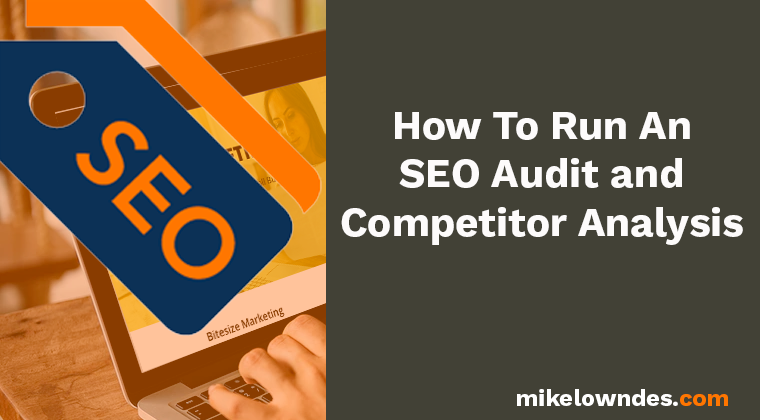How To Run An SEO Audit and Competitor Analysis

SEO Audit and Competitor Analysis Process
This summarises the key aspects of conducting an SEO Audit and Competitor Analysis for existing websites. It must be noted that this processes differs from that which would be recommended before a new site is implemented.
SEO process overview
The key stages of the SEO process for existing website are summarised as:
Audience Identification
Who is the site intended to reach?
Audience Intent
What are your audience looking for?
Keyword Research
What keywords and phrases are they using?
- Navigational queries…
- Transactional queries…
- Information seeking queries…
Site Technical Audit
Checking your site out for sub-optimal design and layout
Site Content Audit
Checking your site out for sub-optimal content
Competitor Analysis and Comparison
Checking your competition with tools like SEMRush
- Site architecture / page structure
- Content assessment (word counts, page layouts, keyword use, topical focus, LSI keywords etc.)
- Frequency and nature of site updates
- Indexed pages
- Domain age
- Number of Top Ranking keywords
- Paid search targeted keywords
- Top ranking terms / landing pages
- Site performance
- Extent / presence of structured markup
- Volume of technical issues
- Presence of HTML / XML sitemaps
- Backlinks (# links, # linking domains, location of linking sites, topical relevance of links, authority and trust of inbound links)
- Social media – accounts, frequency of updates, distribution of links, audience sizes
- More…
Technical Optimisation
Now it's time to get working on your findings
Content Strategy
Now it's time to plan your content and landing page for sales funnels - NOTE: Use a content planner
Promotion and Link Acquisition
Getting your updated site seen and acquiring backlinks from high authority sites
On-going Evaluation and Reporting
Once you have completed what you need to do you should be in good shape and now the ongoing work of evaluating and documenting any changes to keep on top of things. Documenting any updates or changes you make is useful for referencing back to traffic fluctuations, and smake and adjustments going forward.
If you would like to take advantage of a full SEO audit for your site or one of your clients sites, just get in touch

